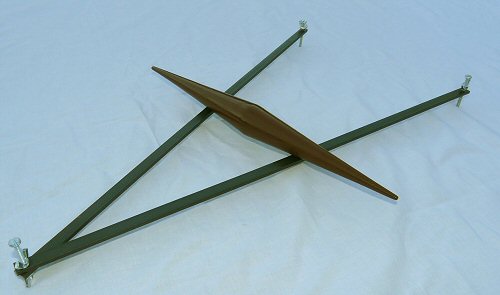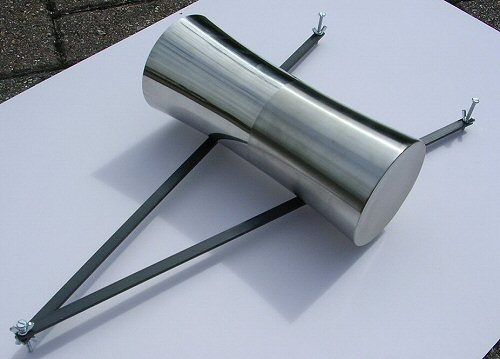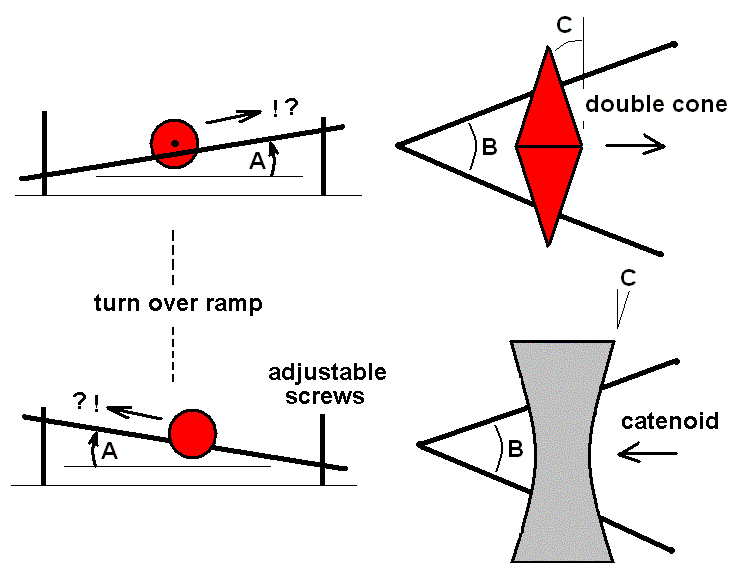

Experiment 1 - cylinder
First we set up the screws so that the ramp just slopes. That is we adjust the two screws at the ends of the metal bars to be slightly higher than the screw located at the meeting point of the two metal bars. What will happen if we put the cylindrical rod onto the middle of the ramp? Well no prizes for guessing that it will roll down hill - correct!
Experiment 2 - double cone
However if we put the double cone in the middle what will happen? - it apparently defies gravity and rolls up hill! What's going on?? The explanation is something like this. As the double cone rolls along the sloping ramp it only ever makes contact at two points. Because of the ramp shape these points of contact change (move out from near the center of the double cone) as it moves along. At first the ramp may contact the double cone near to the center where it is quite thick and so the center point of the double cone is quite high above the ramp. As it rolls up the ramp the point of contact changes and this center points drops down toward the level of the ramp. Now as long as this drop is greater than the apparent rise up the sloping ramp, the center of mass of the double cone is always falling even if it looks like its actually going up hill ! The crucial point here is that the center of mass is actually always falling down hill as it apparently looks like its going uphill - its a sort of optical illusion (also see the diagram below). If the ramp gets too steep the center of mass of the double cone will not be able to move downhill enough to compensate for the rise and the illusion will not work.

If the ramp is now turned over (so that it slopes the other way) its now at the correct angle for the catanoid to apparently roll up-hill. Newton didnt have such high tech loo-brush holders, although he would have probably known of the shape - the catenoid !
There is no magic here (apart from the magic of physics) its just depends on the relationship between the ramp slope angle (A), the angle / width of the ramp (B) and the way the double cone or catanode shapes change over its length (C) that makes for this very interesting illusion of apparently defying gravity - see the diagram below.

THE CREATIVE SCIENCE CENTRE
home | diary | whats on | CSC summary | latest news